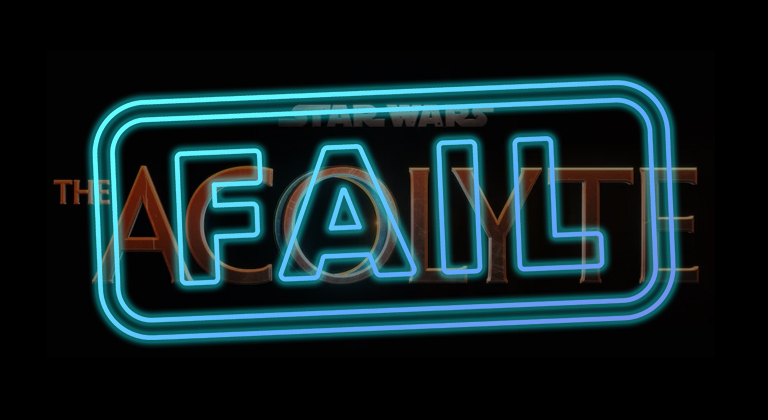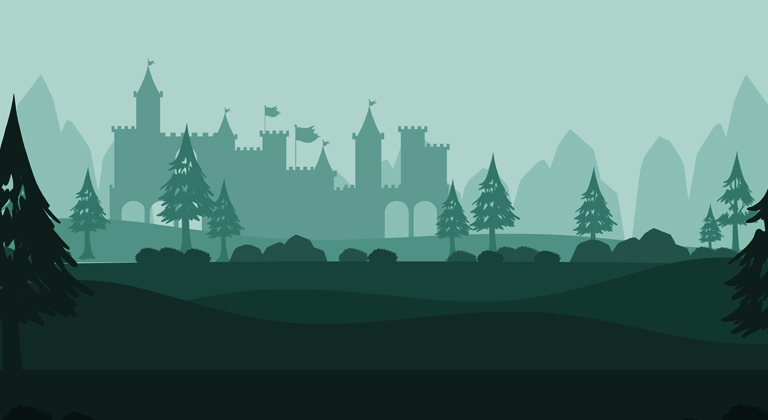Hard Lessons Learned from the Failure of The Acolyte
It’s often said that you can learn more from failure than success, but it’s not only your own failures that can teach valuable lessons. The Acolyte is a prime example—a show that promised so much, yet stumbled in its execution, offering key “lessons learned” for writers. While fans and critics alike were divided over its story, there’s no denying that its flaws provide an opportunity to learn what not to do when crafting narratives.
In this week’s blog, Ginger breaks down the show’s major misfires and explores how we can turn them into opportunities for growth in our creative journeys. There are valuable lessons to learn from studying the pitfalls of this Disney+ series—such as poor use of pre-existing characters or an overreliance on a non-linear timeline—and they serve as a reminder that even the most ambitious and well-funded projects can fall apart if the core storytelling isn’t solid.
Warning: For those who haven’t yet watched the series, there are some potential spoilers ahead.
A few weeks ago, I wrote about the importance of a satisfying ending to your stories, and used the controversial Disney+ show The Acolyte as an example. While the show was savaged by critics and fans alike, it did deliver an unexpected payoff when we learned that the Jedi Master we’d all been rooting for throughout the series was actually guilty of some terrible things.
That payoff, however, wasn’t enough to save the show. Recently, we learned that Disney+ had decided not to renew The Acolyte for Season 2, leaving fans of the show upset, and even its harshest critics wondering if perhaps they’d laid on the criticism a little too hard!
But while I don’t think The Acolyte was nearly as bad as many of the rabid Star Wars fans claimed it was, the show was clearly very far from perfect. There were several things about it which stood out as examples of what NOT to do when telling a story – and I thought to commemorate this one-season wonder, we should examine what those things were.
So, strap into your snowspeeder and get ready for a lesson in how NOT to write a science fiction series (or any series, for that matter.)
Mistake One: Controversial Guest Appearances
In many ways, The Acolyte was doomed before the series had even finished its full eight-episode run. By releasing an episode a week, fans were always ready with a brand new list of things to complain about without knowing if those things would actually get resolved in the next episode.
One of them, which I mentioned in my previous article, was the guest appearance of Jedi Master Ki-Adi-Mundi – first seen in the 1999 Star Wars prequel movie The Phantom Menace.
Ret-conning the birthdate of this Jedi Master caused a lot of consternation on the Internet (even though his original age had only been canonized in a trading card game.) However, what really caused problems was the fact that Ki-Adi-Mundi’s only line in The Phantom Menace had been “the Sith have been extinct for a millennium” and the whole point of The Acolyte was that a Sith was out there murdering Jedi!
If the detractors had waited a week, however, they might have understood why Ki-Adi-Mundi was included. The whole point of the show was that the Jedi subsequently initiated a cover-up of this Sith activity, and Ki-Adi-Mundi’s line in A Phantom Menace was supposed to demonstrate that this cover-up had been successful even a century later.
Cameos by Darth Plagueis (his only on-screen appearance) and Yoda were less controversial, but did teach us the same important lesson – be wary of characters you include in your story “just because.”
Lessons Learned from Mistake One:
Yes, we all love a cameo – and your readers might love seeing a character from one of your other books turn up in this one! However, you should never do so at the expense of the story you’re currently trying to tell; and definitely not when it breaks the canon of your own literary universe.
Mistake Two: An Unnecessary Non-Linear Timeline
Disney+ shows seem to be taking lessons from the same playbook, and that includes a heavy reliance on non-linear storytelling. This is a method of telling a story in a chronologically disjointed fashion – for example, how The Acolyte visited three distinctly different timelines in separate episodes.
While non-linear timelines can make for really compelling fiction – you need only look at the movie Pulp Fiction to see how it’s done properly – it’s not something that works every time, and often telling a story in a straight chronological fashion makes it clearer and more enjoyable for audiences to engage with. I know the point of The Acolyte was to reveal Master Sol’s duplicity through a big reveal in the final episodes, but I kind of felt that fell flat because the timeline of the episodes jumped around so much.
Lessons Learned from Mistake Two:
A great piece of advice for authors is to focus on clarity, not cleverness, and I think in the case of The Acolyte, the writers spent too much time figuring out how to have their clever final reveal, rather than keeping the audience engaged and entertained by telling the story step-by-step.
Mistake Three: Plain, old-fashioned bad writing
In the second episode of The Acolyte, Master Sol and his former apprentice, Osha, travel to visit Jedi Master Torbin, who has been in a state of meditative exile since the events that set the story in motion. Sol and the others move swiftly through a Jedi temple to find Torbin, but Osha gets distracted along the way – taking another path and stumbling across Torbin before the others…
…which doesn’t make a lick of sense!
How did Osha find a faster route than the others, even though they were headed directly there? It’s a blatantly stupid bit of storytelling and was, for me, the moment that I felt snapped out of the flow of The Acolyte and started picking holes with it.
Lessons Learned from Mistake Three:
Be careful not to make silly mistakes in your writing – such as describing events that don’t really make much narrative sense when you think about it. While Osha stumbling across Torbin before the others helped drive the story of The Acolyte along, it did so by insulting the viewer’s intelligence.
Mistake Four: Focusing on the Future Instead of the Present
Another mistake that seems commonplace amongst Disney+ shows (especially their Marvel ones) is spending too much of the runtime building up to what’s happening next – introducing new characters, spin-offs, and sequels.
This was very clear in The Acolyte. Even before the first few episodes had aired, the stars of The Acolyte were talking about “what happens next” and they even produced a few posters proudly proclaiming “The Acolyte: Season One.”
However, there wouldn’t be a Season Two – and part of the reason was that so much of the first series was spent building up what happened next that the writers ignored what was happening right then and there! The series did deliver an ending (and I kind of liked it) but that ending was overshadowed by the loose threads that the writers probably assumed they’d be able to address in the following season.
Instead, the legacy of The Acolyte is to remain unfinished – leaving all of us disappointed.
Lessons Learned from Mistake Four:
Even if you’re planning to write a whole series of books, focus on the characters at the core of each and every novel right now instead of preparing readers for what happens in a subsequent installment that might never actually materialize.
Mistake Five: Not Giving The Readers What They Want
The fifth and final mistake that The Acolyte made is another issue that Disney seems to be coming up against again and again with their Star Wars franchise – not giving their audience what they want.
In the disastrous sequel trilogy, Disney tried “deconstructing” Star Wars by having Han Solo and Chewbacca run from responsibility and back into smuggling, and by turning Luke Skywalker into a traumatized hermit. All the progress that had made these characters so heroic at the end of Return of the Jedi was reversed – to the point that actor Mark Hamill decided to treat the Luke Skywalker he played in The Last Jedi as “an entirely different character.”
The Acolyte is guilty of this in spades. The concept of The Jedi Order being out-of-touch and arrogant was an interesting one (and George Lucas himself has used that as the opportunity for Palpatine to destroy them in the prequels.) However, out-of-touch and arrogant is very different to the way the Jedi were portrayed in The Acolyte, which sees them go out of their way to cover up the murder of their comrades and the existence of a very real and deadly threat to their order.
This is totally against the vision of The Jedi from George Lucas’s original films – and against what most of the Star Wars audience think of as the Jedi! As a thought experiment it’s quite an interesting one – but in terms of storytelling, it practically spits in the face of the dedicated fan. It would be like making a WW2 movie in which the Nazis were the good guys.
Add in the rather ambiguous ending, in which Osha “triumphantly” joins Qimir as a Sith Apprentice, and it’s easy to see why fans had a hard time embracing the show. After all, it effectively reverses the concepts of good and evil that Star Wars has always been so famous for championing.
As a writer, it’s disturbingly easy to fall victim to this same trap. I know many romance authors who thought that their audience wouldn’t mind if the book didn’t have a Happily Ever After (spoiler alert – they did.) Even Agatha Christie, one of the most successful authors of all time, was criticized when she wrapped up Murder on the Orient Express with a twist that made figuring out “whodunit” practically impossible.
Lessons Learned from Mistake Five:
Stay true to your genre and your audience expectations if you want your book to appeal to readers. There’s nothing wrong with a bit of experimentation, but readers want what they want – and they’re bitterly disappointed when they don’t get it.
Conclusion
While The Acolyte was very far from the disaster many embittered fans claim it was, the show did have some pretty major flaws. From scenes that didn’t make sense, to themes that contradicted the very spirit of Star Wars, it’s easy to understand why the series didn’t gel with fans like Disney+ had hoped it would.
However, by analyzing the mistakes The Acolyte made, we might be able to avoid making them in our own writing – and avoid cancellation! So, take these lessons to heart as you dive into weaving your own wild and wonderful adventures.












The biggest issue was that it was written in the same style as the prequels which weren’t well received or understood either.
That you think the Jedi are inept in this story means you have missed it as well. The Jedi aren’t incompetent, the Sith were behind what happened at Brendok. There are several clues that Qimir is at Brendok at the same time as the Jedi, interfering and making the Jedi seem incompetent.
There is what is set up the 1st episode. The Jedi live in a dream, the Alcolyte must kill the dream. The dream isn’t just the force, it’s their perception of their skills and how they use the force and think they are right. It isn’t just about killing a Jedi with the force, it’s also about shattering their arrogance and reputation.
Assuming that Qimir was masking his presence in the force outside the Jedi Temple and not doing anything that would reveal him as a force dark side user, when Qimir 1st encounters Sol in the 5th episode he recognizes Sol’s presence in the force. Since he can’t see out of his helmet, he has recognize Sol’s force aura which means he had to have met him before, in a setting where he could feel Sol in the force without being specifically identified, like near a Coven full of Dark side Witches.
In the last episode Osha tells Qimir that the only way into the castle is through the elevator, yet Qimir disappears a moment later, and shows up inside near Sol, before Osha even makes it inside.
When Qimir goes to erase Mae’s mind, he is only erasing traces of Osha and himself. That the last thing that Mae remembers is her mother’s death, means to remember more would incriminate him. He was there, he set the bomb that exploded and force pushed Mae into that tunnel.
Finally, it shouldn’t be to difficult to imagine Qimir, making Sol feel danger in the force and misinterpreting the Mother’s intentions as hostile, at just the right time. If you go back and watch Indara doesn’t actually kill the Witches by breaking the link in the Wookie’s mind, it’s actually the other way around. The Witches die 1st and then the link is broken. If Indara, is trying to pull Koril out of the Wookie she would of had to change her focus to kill the Witches and that is not what we see.
So the biggest problem is that 90% of fans completely miss all this, so they think the show is 30% when it’s closer to 60%.